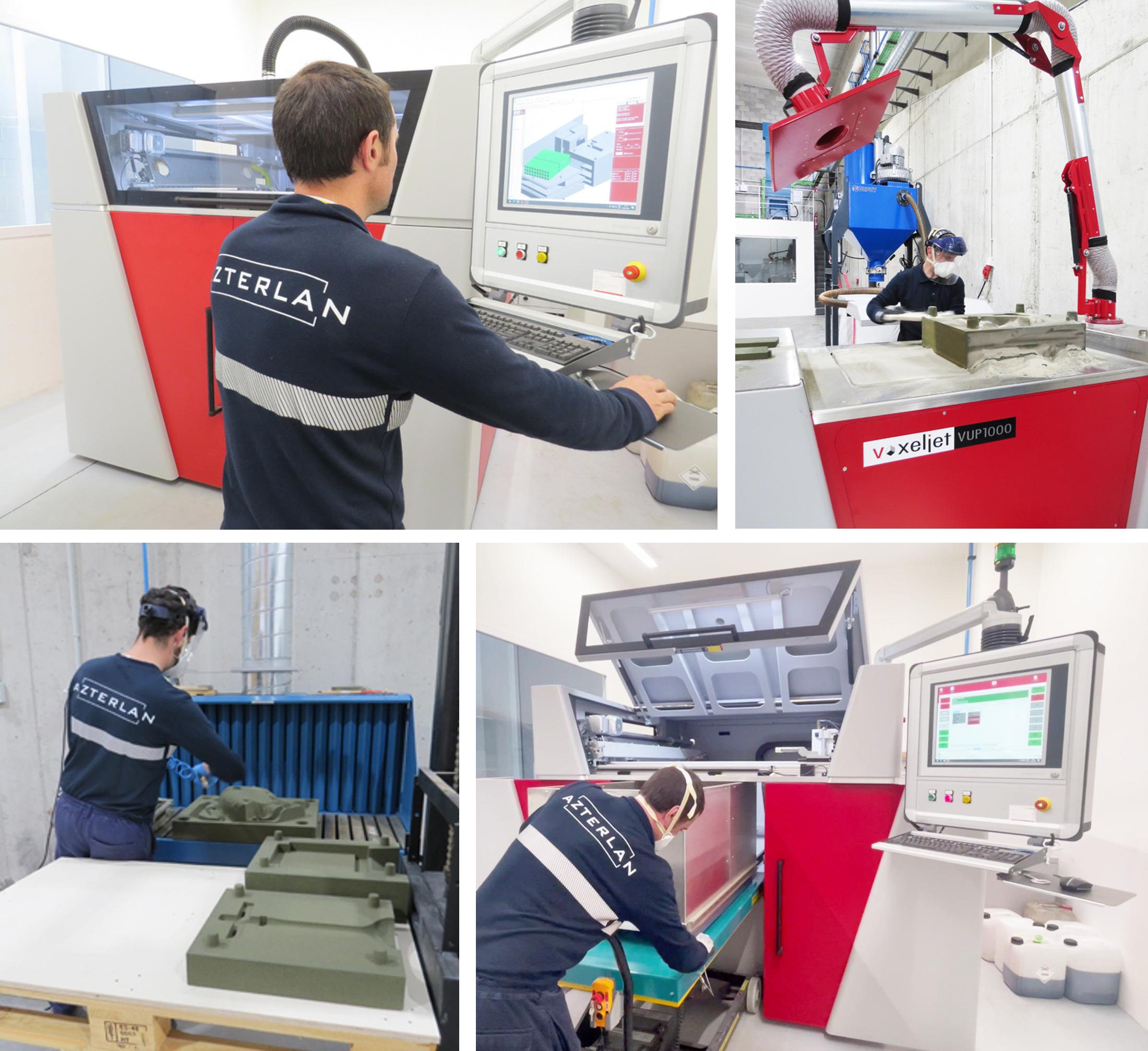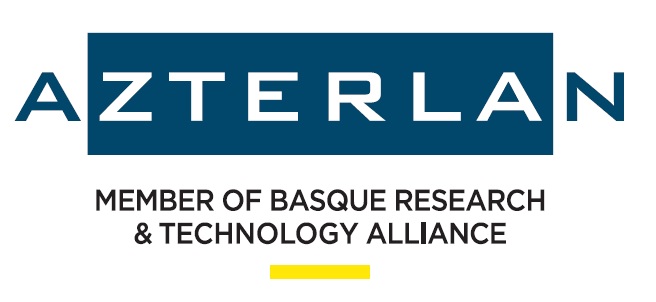NAME Harezko moldeen 3D-ko fabrikazio gehigarrizko zelula

La célula VOXELJET VX1000S de 300 L y 40 L/h deposita una capa de arena preactivada y con la inyección del ligante en la zona definida por el CAD se liga capa a capa el molde. Sus dos cabezales controlan el tamaño de la gota, el caudal y el espesor de la capa. El molde/macho impreso puede tener geometría 3D muy complejas, eliminando el modelo físico y con una libertad de diseño impensable en el moldeo convencional. La flexibilidad de fabricación permite innovaciones dentro del sector de fabricación aditiva, de fundición (llenado, solidificación, moldeo en cáscara) y del diseño de componentes.
FIELDS OF APPLICATION
AM/3D Printing Process
MOST OUTSTANDING EQUIPMENT AND COMPONENTS
-
3D Printer unit VOXELJET VX 1000S
-
Omega 303P Sand mixer system and Omega 303P activator
-
Parking position for curing and unpacking station
-
Print heads with flow microinjectors and parametrizable thickness
-
Rapid 3D Software for the layout adjustment and moulds packaging
SERVICES OFFERED BY THE ASSET
Manufacturing of highly complex demonstrators and prototypes
Demonstrators and highly complex metallic components combining two processes “near the shape”: additive and casting manufacturing to improve them in terms of design, properties and new functionalities. Combined with another BDIH active, sand moulds and prototypes made with steel, cast iron, or other base material (Ni, Al,…) could be supplied.
Manufacturing of moulds/cores to facilitate heat transfer
To increase the heat transfer, the manufacturing of cores is performed with inner reticular structure, by performing location of integrated metallic inserts of other materials; by application of different coatings which provoke the dissipation
Manufacturing of sand moulds/cores with high superficial quality
Optimization of additive manufacturing process by means of optimized deposition trajectories, optimized drop size and flow profiles; and coupled to the deposition trajectory to produce “stair step free” sand moulds. By reducing the steps in the mould, the roughness of the manufactured components is reduced.
Optimization of foundry processes in sand moulds
-New non-conventional filling (helical) and/or feeding systems (parabolic risers, conical helix) with optimized designs made by simulation (Quikcast, Procast, Kassandra) will be tested. -It makes easier the sensorization for thermal monitoring, dynamic, gases, … -Innovation in the layout of mould, partition lines, single moulding, etc.
Redesign of highly complex metallic prototypes
Design/redesign of highly complex prototypes to be manufactured by casting in 3D printed sand moulds, minimizing subsequent machining operations. The cell allows to perform complex geometries impossible to be manufactured by traditional moulding system: very thin thicknesses, bio-inspired designs, lightened designs, topologic optimization, reticular structures, …
Shell moulds
Manufacturing of shell moulds (thin thicknesses). In this way, complex geometries with high solidification rates could be combined. That means, microstructures with better properties and functionalities will be obtained
ENTITY MANAGING THE ASSET

Contact person:
Gorka Zarrabeitia Trujillo
gzarrabeitia@azterlan.es